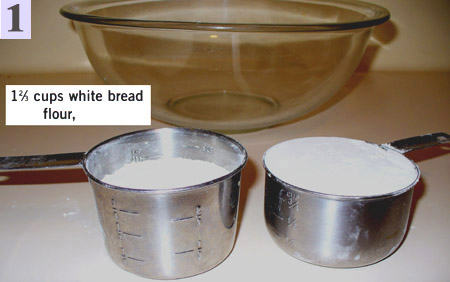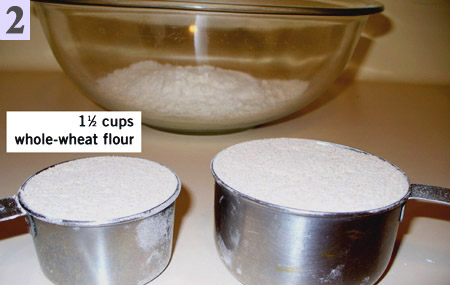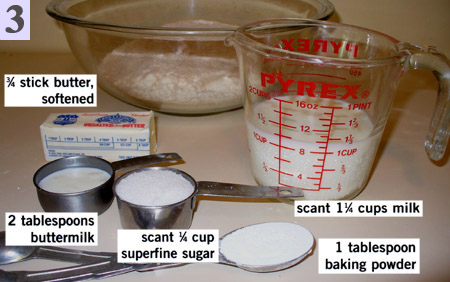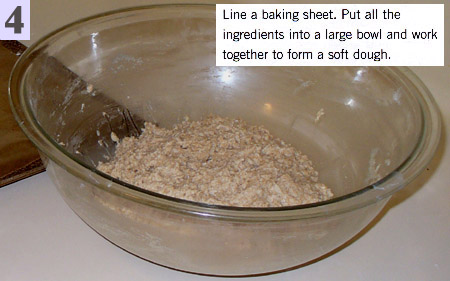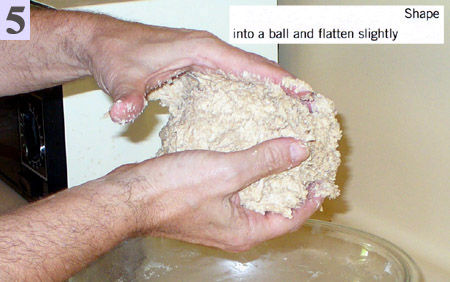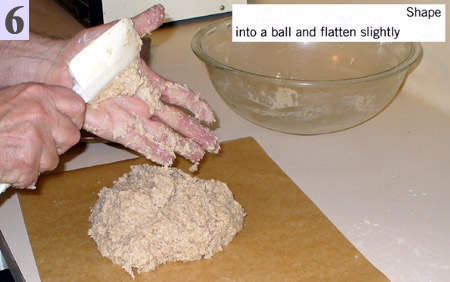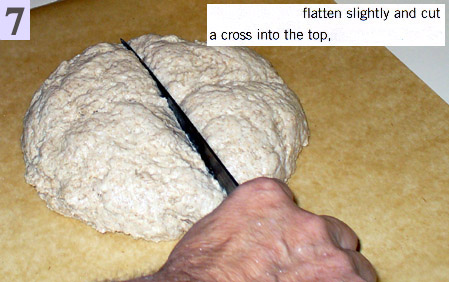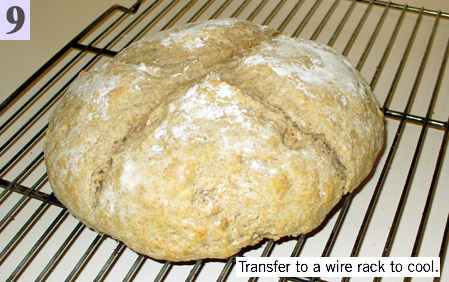|
Is
the photograph above a fib? Two standard answers to this question say
no, but for different reasons. Received knowledge tells us that photographs
don't lie. Postmodernism tells us that the question has no answer because
outside of discourse, within which truth claims aways reside, no discourse
exists to decide the claim. It seems either the photograph is telling
the truth or truth-telling itself is moot. Well, a fig to everyone,
including postmodernists. I say this photograph lies. The proof is in
the pudding, and here's my proof.
A
photograph is always part of an argument, and this one's argument is
hardly disputable. It is offered in a bread-making cookbook by Paul
Hollywood, 100 Great Breads (New York: Barnes & Noble Books,
2004, pp. 26-27). The picture, verso, is of Whole-wheat Soda Bread and
the recipe for it stands recto. The argument is that if the recipe is
followed faithfully, the cook will end up with a loaf like the one in
the photograph—and what a delectable loaf it looks! I trusted
the argument, followed the recipe, and ended up with a dough so unbreadlike
I didn't even waste time trying to bake it. Hence the exasperated X
through the recipe. I might just as well have X'd the photograph of
the loaf, though. Both are lies. The recipe says, "Follow me and
that loaf will be yours." The photograph says, "Want me and
all you have to do is follow that recipe." Taken alone, unapplied,
maybe neither picture or text can be said to lie. Together, applied,
they lie.
Or
maybe my application was in error. So I made the recipe again and documented
it step by step. With photographs, of course. Here's my proof. You judge.
|
|
|
|
|
|
|
|
|
In
words, the ingredients mixed up into a dough with a consistency
closer to bread pudding than bread. With wet hands, I was able
to "shape" and "flatten" it into a form
that, to my farm boy eyes, looked like a healthy cow flop. Impossible
to cut much of a cross because the dough stuck to the sharpest
knife. Flour "sprinkled" on it congealed on contact.
But I baked the sad affair at the stipulated temperature for
the stipulated time, and it came out of the oven with the stipulated
"golden brown" color. I cooled it thoroughly on a
rack.
The
outcome was a loaf shaped like a mushroom cap, the center of
which was still so doughy that even Luna (the dog) was reluctant
to eat it.
Compare
the next two photographs and decide which one is telling the
truth of this recipe.
|
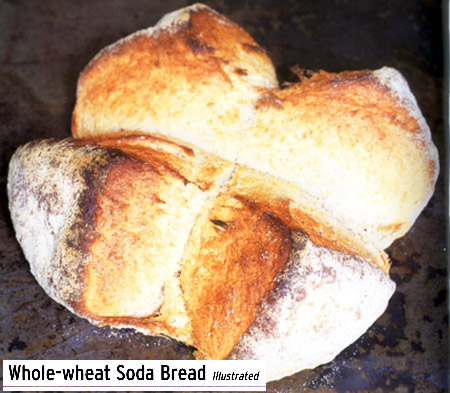
|
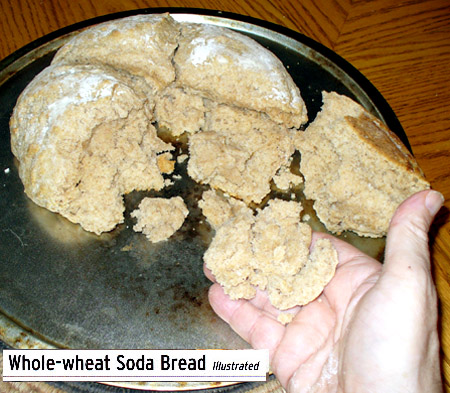
|
I've been baking bread for a quarter of a century and know the leeway
built into bread recipes--allowance for different flours, fluctuation
in weather humidity, idiosyncratic kneading habits, elevation above
sea level,
age of baking soda,
tolerance of oven temperature settings, etc. As Graham Tomlinson demonstrates
in an essay on the need to interpret food recipes, even a direction
as forthright as "1/3 cup chopped onion," obliges hermeneutic
and
practical
activity on the cook's part that is neither single nor simple ("Thought
for Food: A Study of Written Instructions," Symbolic Interaction,
9.2, 1986, pp. 201-216). But no culinary savoir-faire could
have converted this recipe into the pictured loaf without altering the
basic measurement of ingredients asserted in the recipe itself (as another
test, compare its ratio of dry to wet ingredients to that of other Irish
soda bread recipies).
Can
a recipe/picture lie? Of course it can, as any cook knows. Truth inheres
in discourse because discourse is not just words and pictures on the
page. Discourse happens. Discourse is nothing until enacted. In another
essay from the journal Symbolic Interaction, "Telling
the Truth after Postmodernism" (19.3, 1996, 203-223),
Dorothy E. Smith scrutinizes the way instructional discourse is socially
performed and concludes that it is in the performance that truth is
constituted. Scientific reports, street maps, recipes, and a multitude
of other discourse practices turn out to be truthful or not "in
locally accomplished social acts that complete the sequence of referring,
finding and recognizing 'same' objects and recognizing them as the same"
(pp. 190-191). Thus have some findings of scientists been discovered
to be incorrect, your friends' map to their house wrong, or that cursed
bread recipe not the same one that produced the bread in the photograph.
RH—March,
2007
|


